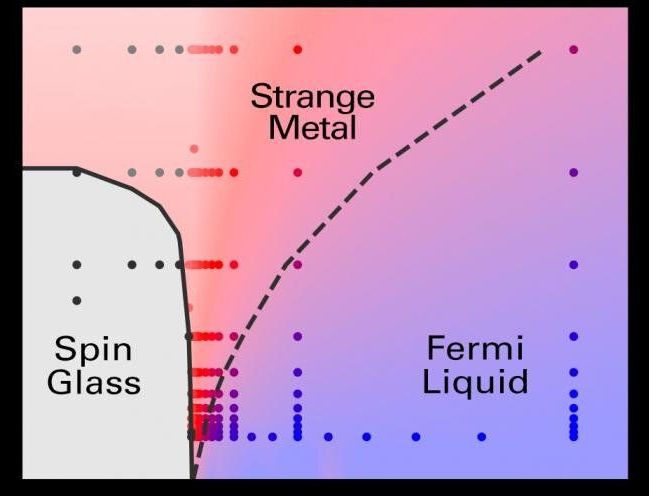Researchers in Spain and Italy have constructed the first-ever quantum phase battery – a device th.
If you do not yet have an account, please register so you can.

Researchers in Spain and Italy have constructed the first-ever quantum phase battery – a device th.
If you do not yet have an account, please register so you can.

Physicists at the University of Alberta have developed technology that can translate data from microwaves to optical light—an advance that has promising applications in the next generation of super-fast quantum computers and secure fiber-optic telecommunications.
“Many quantum computer technologies work in the microwave regime, while many quantum communications channels, such as fiber and satellite, work with optical light,” explained Lindsay LeBlanc, who holds the Canada Research Chair in Ultracold Gasses for Quantum Simulation. “We hope that this platform can be used in the future to transduce quantum signals between these two regimes.”
The new technology works by introducing a strong interaction between microwave radiation and atomic gas. The microwaves are then modulated with an audio signal, encoding information into the microwave. This modulation is passed through the gas atoms, which are then probed with optical light to encode the signal into the light.

Even by the standards of quantum physicists, strange metals are just plain odd. The materials are related to high-temperature superconductors and have surprising connections to the properties of black holes. Electrons in strange metals dissipate energy as fast as they’re allowed to under the laws of quantum mechanics, and the electrical resistivity of a strange metal, unlike that of ordinary metals, is proportional to the temperature.
Generating a theoretical understanding of strange metals is one of the biggest challenges in condensed matter physics. Now, using cutting-edge computational techniques, researchers from the Flatiron Institute in New York City and Cornell University have solved the first robust theoretical model of strange metals. The work reveals that strange metals are a new state of matter, the researchers report July 22 in the Proceedings of the National Academy of Sciences.
“The fact that we call them strange metals should tell you how well we understand them,” says study co-author Olivier Parcollet, a senior research scientist at the Flatiron Institute’s Center for Computational Quantum Physics (CCQ). “Strange metals share remarkable properties with black holes, opening exciting new directions for theoretical physics.”

An international team led by researchers at Princeton University has uncovered a new class of magnet that exhibits novel quantum effects that extend to room temperature.
The researchers discovered a quantized topological phase in a pristine magnet. Their findings provide insights into a 30-year-old theory of how electrons spontaneously quantize and demonstrate a proof-of-principle method to discover new topological magnets. Quantum magnets are promising platforms for dissipationless current, high storage capacity and future green technologies. The study was published in the journal Nature this week.
The discovery’s roots lie in the workings of the quantum Hall effect- a form of topological effect which was the subject of the Nobel Prize in Physics in 1985. This was the first time that a branch of theoretical mathematics, called topology, would start to fundamentally change how we describe and classify matter that makes up the world around us. Ever since, topological phases have been intensely studied in science and engineering. Many new classes of quantum materials with topological electronic structures have been found, including topological insulators and Weyl semimetals. However, while some of the most exciting theoretical ideas require magnetism, most materials explored have been nonmagnetic and show no quantization, leaving many tantalizing possibilities unfulfilled.

However, to dismiss the subject as fantastical or unnecessary would be akin to telling scientists 100 years ago that landing on the moon was also irrelevant.
This is because, for pioneers and champions of artificial intelligence, quantum computing is the holy grail. It’s not a make-believe fantasy; rather, it’s a tangible area of science that will take our probability-driven world into a whole new dimension.

An analysis of the speed of the most energetic photons ever observed from a gamma-ray burst sets new constraints on certain theories of quantum gravity.
See more in Physics
Click to Expand.

A group of international scientists have substantially lengthened the duration of time that a spin-orbit qubit in silicon can retain quantum information for, opening up a new pathway to make silicon quantum computers more scalable and functional.
Spin-orbit qubits have been investigated for over a decade as an option to scale up the number of qubits in a quantum computer, as they are easy to manipulate and couple over long distances. However, they have always shown very limited coherence times, far too short for quantum technologies.
The research published today in Nature Materials shows that long coherence times are possible when spin-orbit coupling is strong enough. In fact, the scientists demonstrated coherence times 10,000 times longer than previously recorded for spin-orbit qubits, making them an ideal candidate for scaling up silicon quantum computers.

Quantum magnetometry, one of the most important applications in quantum metrology, aims to measure the magnetic field with the highest precision. Although estimation of one component of a magnetic field has been well studied over many decades, the highest precision that can be achieved with entangled probe states for the estimation of all three components of a magnetic field remains uncertain.
In particular, the specific questions include how to balance the precision tradeoff among different parameters, what is the ultimate precision, can this precision limit be achieved, and how to achieve it.
Under the lead of Prof. Guo Guangcan, Prof. Li Chuanfeng and Prof. Xiang Guoyong from University of Science and Technology of China (USTC) of the Chinese Academy of Sciences, together with Prof. Yuan Haidong from the Chinese University of Hong Kong, obtained the ultimate precision for the estimation of all three components of a magnetic field with entangled probe states under the parallel scheme. The study was published online in Physical Review Letters.

The latest AI algorithms are probing the evolution of galaxies, calculating quantum wave functions, discovering new chemical compounds and more. Is there anything that scientists do that can’t be automated?